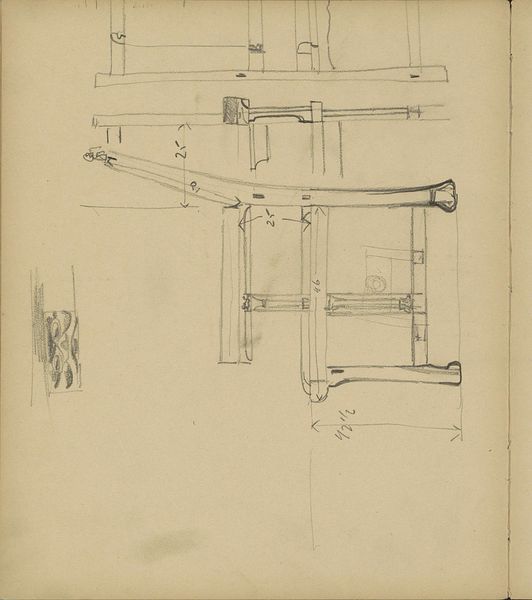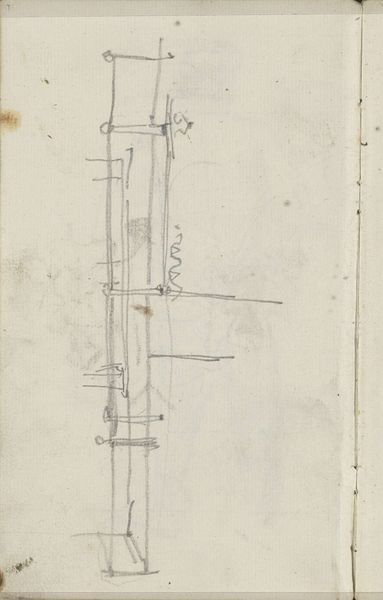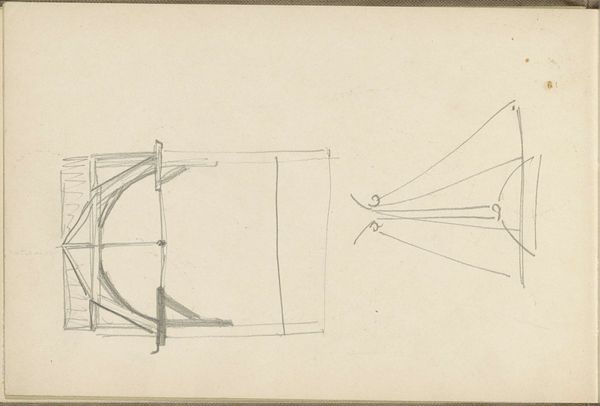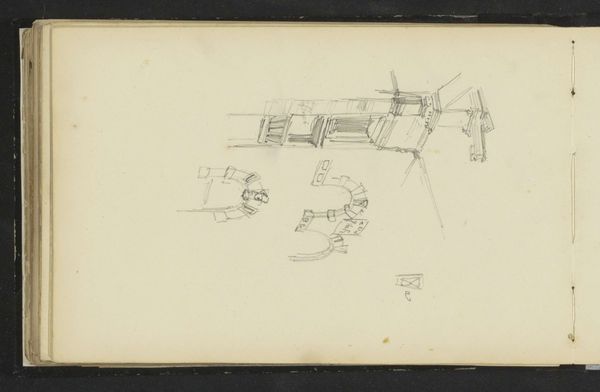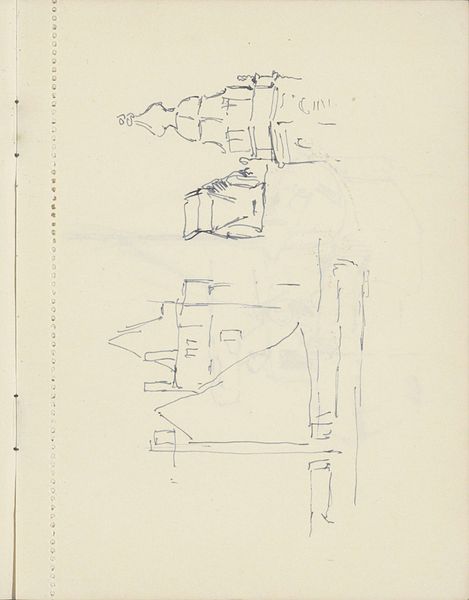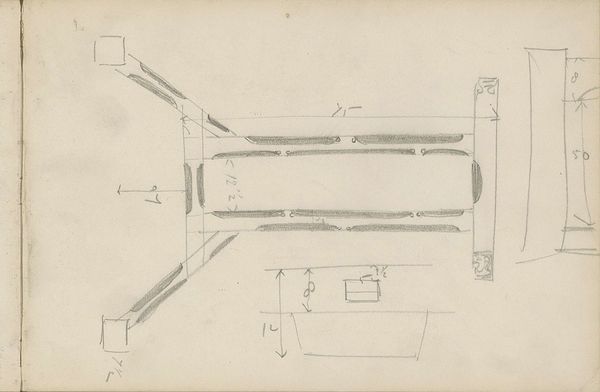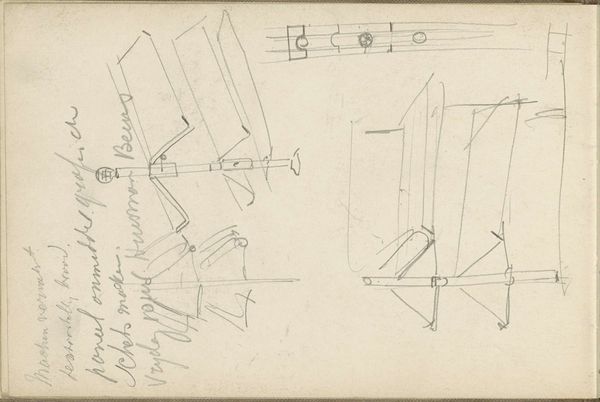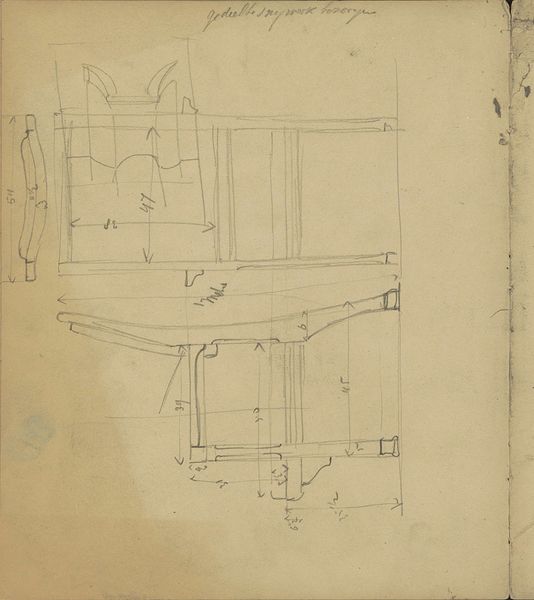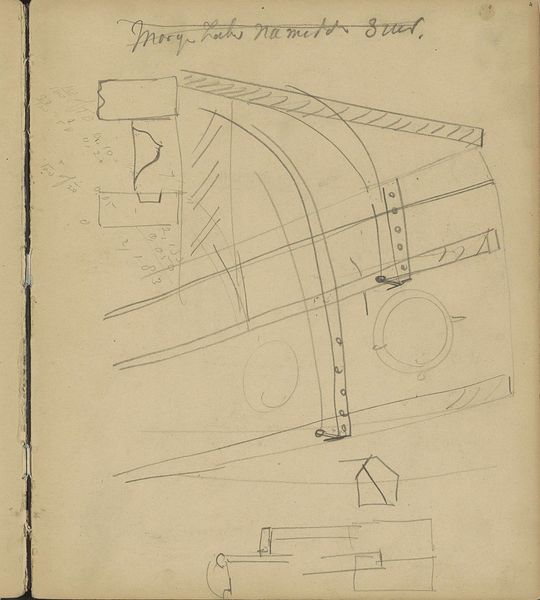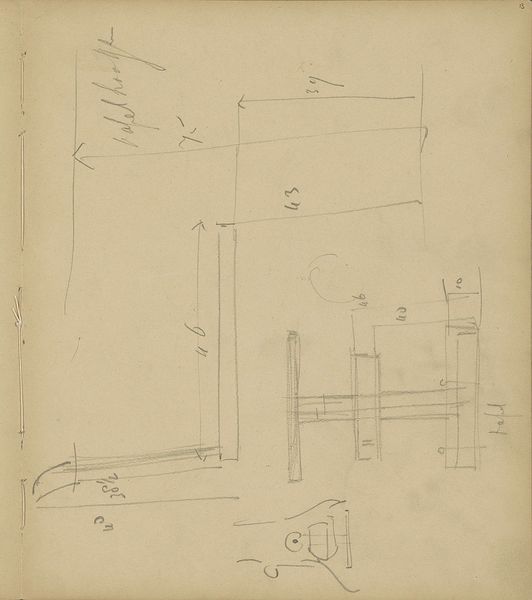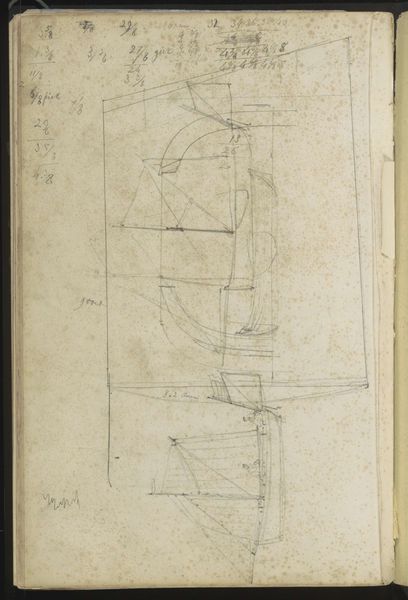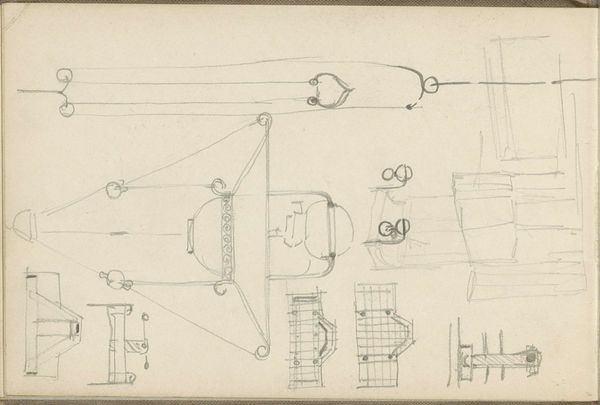
drawing, paper, ink, architecture
#
drawing
#
impressionism
#
landscape
#
paper
#
ink
#
cityscape
#
architecture
Copyright: Rijks Museum: Open Domain
Curator: Allow me to introduce George Clausen's ink drawing on paper, "Hoek van een stenen gevel met een lantaarn en zeilschepen," created in 1874. Editor: Wow, that title's a mouthful, but it immediately evokes a kind of lonely, quiet atmosphere. Like a sketch from a traveler sitting alone at a cafe, watching the harbor. Curator: Indeed. Clausen's approach here showcases Impressionistic tendencies, visible in the suggestive rendering of light and atmosphere. Note how the lines aren't necessarily about precise representation, but more about capturing the essence of the scene. Editor: I love the bareness of it. There's a certain charm in its unfinished quality, the way it reveals the artist's thought process almost. The lantern seems almost anthropomorphic, a silent watcher. Curator: It is precisely the spatial organization that draws me in. Clausen contrasts the angularity of the architecture with the implied fluidity of the ships, generating a compelling tension within the composition. The various perspectives add to that dynamism. Editor: You're right. And I guess, even though it's just a drawing, you can feel the weight of the stone in those blocks, contrasted against the delicate sails on the water. It’s kind of lovely. The lamp and ships mirror each other; like one hangs in the sky and one bobs in the water, but the lines echo! Curator: It’s an exploration of urban landscape translated through the vocabulary of Impressionism; what strikes you most profoundly? Editor: For me, it's that sense of fleeting observation, like a memory half-formed, rendered on paper. The quick strokes, the emptiness around the figures, it leaves space for my imagination to complete the scene. Curator: An apt observation, for it's a piece that thrives on the interplay between what's shown and what remains implied. Editor: Right! And to just catch a glimpse of that quiet, little scene – it feels private.
Comments
No comments
Be the first to comment and join the conversation on the ultimate creative platform.
